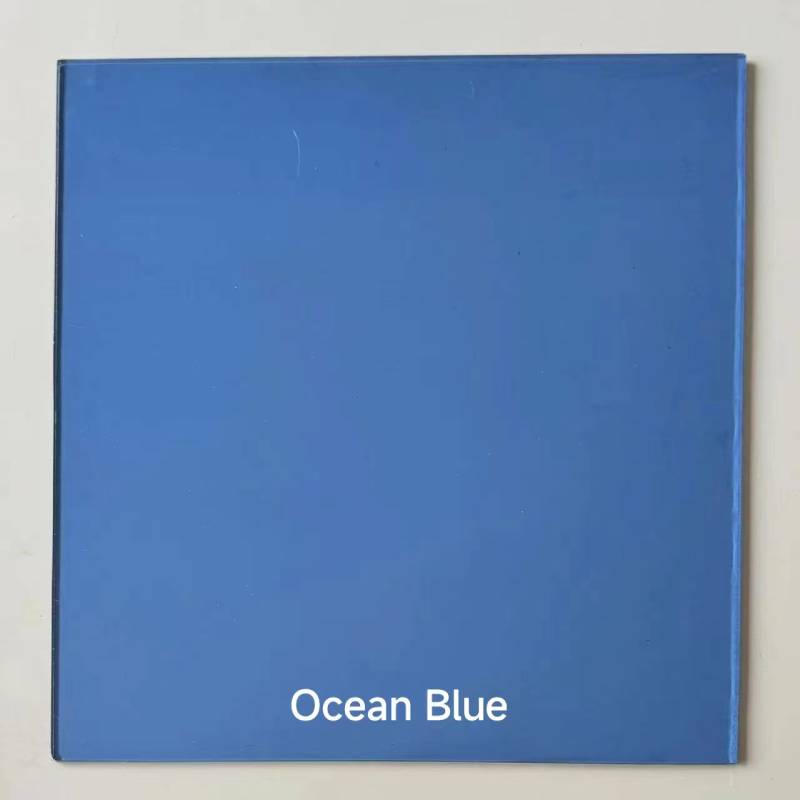Low-E Glass A Revolution in Energy Efficiency
In the quest for a sustainable future, energy efficiency has become a top priority. One of the most effective ways to reduce energy consumption is by using low-emissivity (Low-E) glass. This innovative technology has the potential to significantly lower heating and cooling costs while also providing additional benefits for both residential and commercial buildings.
What is Low-E Glass?
Low-E glass is a type of coated glass that has a thin layer of metal oxide on one or both surfaces. This layer acts as a barrier, reducing the transfer of heat through the glass. The metal oxide layer can be made of various materials, such as silver, tin, or indium, each with its own unique properties.
How Does Low-E Glass Work?
During the summer months, the sun's rays enter a building through the windows and raise the temperature inside. Low-E glass helps to reduce this heat gain by reflecting a significant portion of the infrared radiation back outside. This results in cooler indoor temperatures, which can lead to significant energy savings.
In the winter months, Low-E glass works in the opposite way. It allows more sunlight to pass through the window and into the building, which helps to warm the interior. At the same time, it reduces the loss of heat through the window by reflecting the infrared radiation back inside. This results in warmer indoor temperatures and reduced heating costs.
Benefits of Low-E Glass
There are numerous benefits to using Low-E glass in buildings
Benefits of Low-E Glass
There are numerous benefits to using Low-E glass in buildings

Benefits of Low-E Glass
There are numerous benefits to using Low-E glass in buildings
Benefits of Low-E Glass
There are numerous benefits to using Low-E glass in buildings
 low e plus glass
low e plus glass. Perhaps the most significant advantage is its ability to reduce energy consumption. By lowering heating and cooling costs, Low-E glass can help to lower utility bills and reduce greenhouse gas emissions.
Another benefit of Low-E glass is its ability to improve indoor comfort. By reducing the transfer of heat through the windows, Low-E glass can help to create a more consistent temperature throughout a building. This can lead to increased comfort for occupants and improved air quality.
Low-E glass also offers additional benefits for commercial buildings. For example, it can help to reduce the load on HVAC systems, which can lead to lower maintenance costs and longer equipment life. It can also enhance the aesthetic appeal of a building by providing a clear view of the outdoors while still providing privacy.
Conclusion
Low-E glass is a revolutionary technology that has the potential to significantly improve energy efficiency in buildings. By reducing heat gain and loss through windows, Low-E glass can help to lower utility bills, reduce greenhouse gas emissions, and improve indoor comfort. As awareness of the benefits of Low-E glass continues to grow, it is likely to become a standard feature in new buildings and an attractive retrofit option for existing structures.


 Benefits of Low-E Glass
There are numerous benefits to using Low-E glass in buildings
Benefits of Low-E Glass
There are numerous benefits to using Low-E glass in buildings
Benefits of Low-E Glass
There are numerous benefits to using Low-E glass in buildings
Benefits of Low-E Glass
There are numerous benefits to using Low-E glass in buildings low e plus glass. Perhaps the most significant advantage is its ability to reduce energy consumption. By lowering heating and cooling costs, Low-E glass can help to lower utility bills and reduce greenhouse gas emissions.
Another benefit of Low-E glass is its ability to improve indoor comfort. By reducing the transfer of heat through the windows, Low-E glass can help to create a more consistent temperature throughout a building. This can lead to increased comfort for occupants and improved air quality.
Low-E glass also offers additional benefits for commercial buildings. For example, it can help to reduce the load on HVAC systems, which can lead to lower maintenance costs and longer equipment life. It can also enhance the aesthetic appeal of a building by providing a clear view of the outdoors while still providing privacy.
Conclusion
Low-E glass is a revolutionary technology that has the potential to significantly improve energy efficiency in buildings. By reducing heat gain and loss through windows, Low-E glass can help to lower utility bills, reduce greenhouse gas emissions, and improve indoor comfort. As awareness of the benefits of Low-E glass continues to grow, it is likely to become a standard feature in new buildings and an attractive retrofit option for existing structures.
low e plus glass. Perhaps the most significant advantage is its ability to reduce energy consumption. By lowering heating and cooling costs, Low-E glass can help to lower utility bills and reduce greenhouse gas emissions.
Another benefit of Low-E glass is its ability to improve indoor comfort. By reducing the transfer of heat through the windows, Low-E glass can help to create a more consistent temperature throughout a building. This can lead to increased comfort for occupants and improved air quality.
Low-E glass also offers additional benefits for commercial buildings. For example, it can help to reduce the load on HVAC systems, which can lead to lower maintenance costs and longer equipment life. It can also enhance the aesthetic appeal of a building by providing a clear view of the outdoors while still providing privacy.
Conclusion
Low-E glass is a revolutionary technology that has the potential to significantly improve energy efficiency in buildings. By reducing heat gain and loss through windows, Low-E glass can help to lower utility bills, reduce greenhouse gas emissions, and improve indoor comfort. As awareness of the benefits of Low-E glass continues to grow, it is likely to become a standard feature in new buildings and an attractive retrofit option for existing structures.